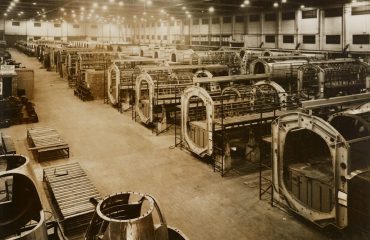Superalloy steels are a class of high-performance materials renowned for their exceptional strength, resistance to corrosion and oxidation, and remarkable ability to withstand extreme temperatures. These properties make them indispensable in a wide array of demanding applications where ordinary steels would fail. This blog post delves into the fascinating world of superalloy steels, exploring their unique characteristics and diverse applications across various industries.
1. Aerospace: The Pinnacle of Superalloy Steel Performance
The aerospace industry is arguably the most demanding user of superalloy steels. The extreme temperatures and stresses experienced by aircraft engines, particularly gas turbine engines, necessitate materials with exceptional high-temperature strength and creep resistance. Superalloys, primarily nickel-based and cobalt-based, are the backbone of these engines. Turbine blades, combustor components, and other critical parts are crafted from these materials, enabling efficient and reliable operation at incredibly high temperatures. The development of advanced single-crystal and directionally solidified superalloys has further pushed the boundaries of performance, allowing for higher engine efficiencies and increased thrust.
Beyond gas turbines, superalloys find applications in other aerospace components, such as rocket engines, where they must endure extreme heat and pressure during launch and flight. Their resistance to oxidation and corrosion is crucial in these harsh environments, ensuring the longevity and safety of the spacecraft.
2. Energy Sector: Power Generation and Beyond
The energy sector relies heavily on superalloy steels for power generation. In gas turbines used for electricity generation, superalloys play a vital role in ensuring efficient and reliable operation. Similar to their aerospace counterparts, turbine blades and other hot-section components are manufactured from these high-performance materials. The ability of superalloys to withstand high temperatures and pressures is critical for maximizing energy output and minimizing downtime.
Beyond gas turbines, superalloys are also used in other energy applications, such as petrochemical processing and nuclear power plants. In these environments, their resistance to corrosion and oxidation is crucial in preventing equipment failure and ensuring safe operation.
3. Industrial Applications: Withstanding Harsh Conditions
The exceptional properties of superalloy steels extend beyond aerospace and energy. Many industrial processes involve extreme temperatures, pressures, and corrosive environments, making superalloys ideal for a variety of applications. For instance, in chemical processing plants, superalloy components are used in reactors and heat exchangers where they are exposed to harsh chemicals and high temperatures. Their resistance to corrosion and degradation ensures the longevity and safety of these critical systems.
Other industrial applications include components for high-temperature furnaces, heat treatment equipment, and specialized tooling. The ability of superalloys to maintain their strength and dimensional stability at elevated temperatures makes them indispensable in these demanding environments.
4. Medical Applications: Precision and Durability
While less common than in other sectors, superalloys are finding increasing use in medical applications. Their biocompatibility and high strength make them suitable for certain implants and surgical instruments. For example, some specialized implants, such as those used in orthopedic surgery, may utilize superalloys due to their ability to withstand the stresses of the human body over long periods. The high corrosion resistance ensures the implant’s longevity and prevents the release of harmful ions into the body.
The precision machining capabilities of superalloys also make them suitable for the creation of intricate surgical instruments that require high durability and resistance to wear and tear.
5. Future Advancements and Research in Superalloy Steel
Research and development in superalloy steels continue to push the boundaries of material science. Scientists are constantly striving to create new alloys with even better high-temperature strength, creep resistance, and corrosion resistance. This involves exploring new compositions, processing techniques, and advanced manufacturing methods. Additive manufacturing, for example, offers the potential to create complex superalloy components with intricate geometries, leading to improved performance and efficiency.
The development of advanced coatings and surface treatments further enhances the performance of superalloy components. These coatings can provide additional protection against oxidation, corrosion, and erosion, extending the lifespan of components in harsh environments. Ongoing research focuses on creating more sustainable and environmentally friendly superalloys, reducing their reliance on rare earth elements and minimizing their environmental impact.
In conclusion, superalloy steels are remarkable materials that have revolutionized numerous industries. Their exceptional properties make them indispensable in applications demanding extreme strength, durability, and resistance to harsh environments. As research and development continue, we can expect to see even more innovative applications of these high-performance materials in the years to come.
Tags: superalloy steel, superalloy applications, aerospace materials, high-temperature alloys, nickel-based superalloys




